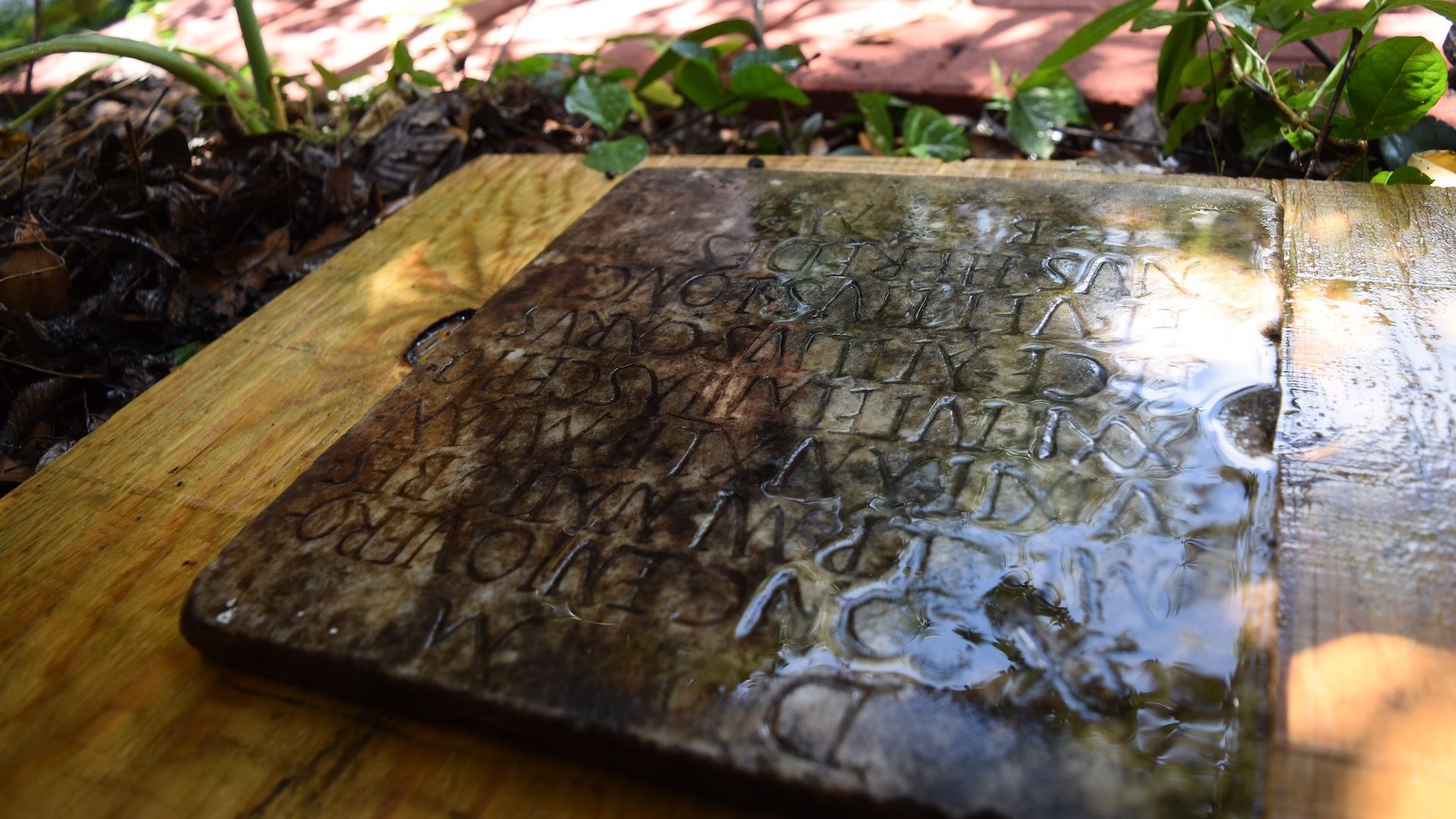When clearing undergrowth in their New Orleans yard one day, a married couple discovered something completely unexpected: a Roman headstone that had once marked the grave of a soldier who lived half the world away in the second century.
Research into the unlikely object indicates that it is genuine, and its discovery hints at an international mystery that dates back to World War II.
In this case, the homeowners were Daniella Santoro, an anthropologist at Tulane University, and her husband Aaron Lorenz, Gray noted in an Oct. 6 online report about the investigations into the stone.
“When Daniella initially described this, I thought maybe it was a 19th-century gravestone that had been scavenged from a New Orleans cemetery and then discarded,” Gray said. “However, as soon as I saw the photo of the inscription, I immediately suspected this was something very different.”
Ancient gravestone
Santoro had found the unusual marble tablet beneath the undergrowth in the backyard of her “shotgun” house in the city’s historic Carrollton neighborhood. The stone is about 12 inches (30 centimeters) wide and slightly longer, and one surface is densely chiseled with Roman text.
Experts say the Latin inscription can be translated to English and reads: “To the Spirits of the Dead for Sextus Congenius Verus, soldier of the praetorian fleet Misenensis, from the tribe of the Bessi [of Thrace], (who) lived 42 years (and) served 22 in the military, on the trireme [warship] Asclepius. Atilius Carus and Vettius Longinus, his heirs, made (this) for him well deserving.”
It was clear this was the gravestone of a soldier, born in the Thrace region of northern Greece, who had served on a Roman warship. But now there was a new mystery: How did the gravestone end up in New Orleans?
Lingering mystery
An investigation revealed that the inscription had already been recorded by archaeologists — but on a second-century grave marker found near Civitavecchia, an ancient city and port about 40 miles (64 kilometers) northwest of Rome. That headstone was reported missing after World War II, however, when Allied bombs destroyed the museum that housed it.
It’s not entirely clear what happened next, but Gray listed a few ideas in his report: maybe a U.S. soldier passing through Civitavecchia after the Allies liberated Rome in 1944 had acquired it as a souvenir; or maybe it was acquired after the war by an antiquities dealer, who then sold it to a tourist, he said. Santoro and Lorenz are now working with authorities in the U.S. and Italy to return the gravestone to Civitavecchia.
“For me, this story reflects a wonderful intersection of a homeowner’s curiosity ultimately bringing to light something unexpected and historically significant,” Gray wrote in his report. “While we may never know exactly how Sextus Congenius Verus’ tombstone ended up in New Orleans, we do know that the item is now safe, and it is on the path to being returned to where it can be properly displayed.”

